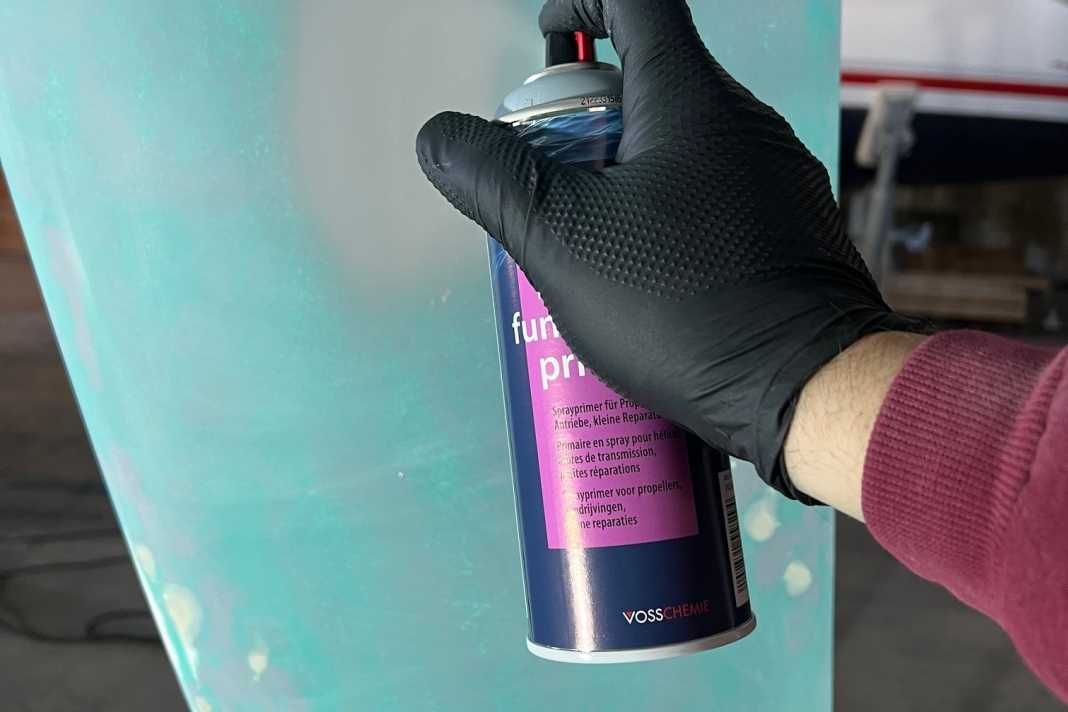



When repairing the underwater hull, there is no getting round the use of a primer - after all, the antifouling should last. The problem with this is that the products either have to be mixed first or they require long drying times. The multifunctional primer from Yachtcare, on the other hand, can be applied directly from the spray can and can be sanded and recoated after a very short time.
Application and properties
Although it is a one-component product, Yachtcare states that it is an epoxy system and the primer can therefore be used safely underwater on steel, aluminium, GRP and wood. The epoxy primer is also said to be suitable as a base for two-component paints. The primer can of course also be used above the waterline.
The 400-millilitre spray can is particularly suitable for smaller repairs and partial areas, saildrives or propellers. Application is straightforward: After thoroughly cleaning and sanding the surface, the primer is sprayed on from a distance of 15 to 20 centimetres. At a temperature of 20 degrees, the surface is hand-set after around 15 minutes and fully hardened after one hour. Colder working conditions naturally prolong the drying time. In our test at around 12 degrees, we were able to sand the epoxy primer after just under two hours without the paper becoming excessively clogged.
The grey epoxy-based primer is easy to apply and fills small irregularities well. The can is equipped with an adjustable spray head so that either a wide upright jet or a round, cone-shaped spray jet can be used. For our priming of a rudder blade, the upright jet was best suited as a large area had to be treated. The round spray pattern is advantageous for details or edges.
Yield and price
Approximately one square metre of primer can be applied per can, with Yachtcare specifying a dry film thickness of around 30 micrometres. Opened cans do not harden and can be reused later. However, care should be taken to ensure that the spray head is blown upside down after use. The 400-millilitre can costs between 20 and 25 euros, depending on the supplier, which corresponds to a price per litre of around 50 to 60 euros. This makes the spray significantly more expensive than a conventional epoxy primer. The multifunctional primer is a practical solution for minor repairs and touch-ups. Its easy handling and fast drying make it possible to work very quickly. However, conventional primers are more economical for priming large areas.
